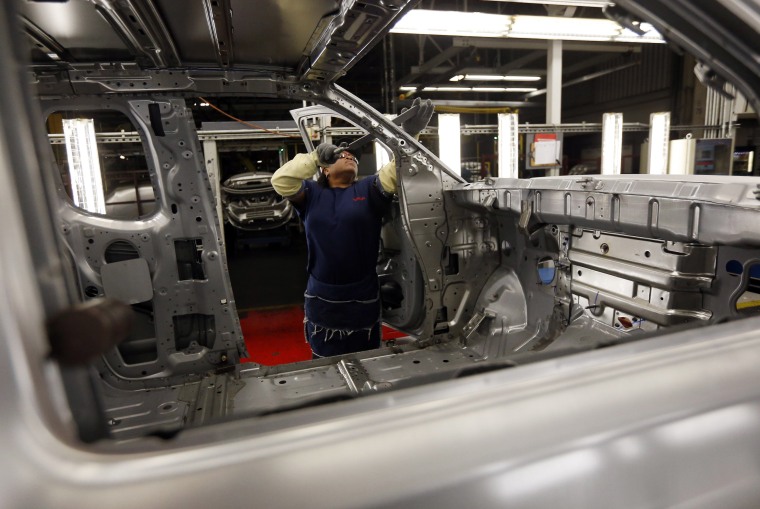As the presidential candidates focus their energies on a handful of swing states up for grabs, they'll be hammering away on the key issues of the 2016 campaign: jobs and wages.
The government reported Friday that nonfarm payroll employment rose by 255,000 in July, and the unemployment rate was unchanged at 4.9 percent.
Related: U.S. Economy Added 255,000 Jobs in July
Wages also edged higher. Last month, average hourly earnings rose by 8 cents to $25.69, extending recent increases. Hourly wages are now 2.6 percent higher than a year ago. That's more than double the inflation rate for the same period.

The continued improvement in jobs and wages means Democrat Hillary Clinton may fare better in states where job and wage growth has been stronger than the national averages.
GOP nominee Donald Trump will likely get better traction on pocketbook issues in states where employment and paychecks have been growing more slowly.
To better assess the impact of swing state economics, CNBC took a look at the data to see which way voters in those states may be leaning.
Based on voter registrations and past voting patterns, these eight states are considered toss-ups: Colorado, Iowa, Nevada, New Hampshire, North Carolina, Ohio, Pennsylvania, and Virginia. (Three states, Florida, Michigan and Wisconsin are seen as leaning toward Clinton; four others, Arizona, Georgia, Missouri and Utah are thought to be leaning toward Trump. The rest are either solidly Republican or Democratic).
Some of the swing states will be more important than others. Just four battleground states — Pennsylvania, Ohio, North Carolina and Virginia — come with a combined 66 electoral votes, or 24 percent of the 270 needed to win the election.
{
"ecommerceEnabled": false
}Based on the most recent state unemployment data, most swing states are doing better than the national average 4.9 percent jobless rate. New Hampshire leads the pack with a 2.8 percent jobless rate, thanks largely to the booming Boston-area economy within commuting distance of the southeast portion of the state.
The job market is weaker in Pennsylvania and Ohio, where unemployment is higher than the national average. That could hurt Democrats in two states with big Electoral College votes.
{
"ecommerceEnabled": false
}While the national jobless rate has fallen roughly in half since the depths of the Great Recession, job growth has been uneven in the battleground states. Since the national trough in early 2010, Sun Belt states like Florida, Arizona and North Carolina have seen payrolls rise faster than the national average.
But states with older, industrial economies like Pennsylvania, Ohio and Wisconsin haven't fared as well. Michigan, which is seen as leaning Democratic, has bounced back well since the trough. But employment levels there and in Ohio still haven't recovered to levels seen before the Great Recession in late 2009.
{
"ecommerceEnabled": false
}Both campaigns have pledged to boost wages for American households, a theme that will play better in some battleground states than others.
Since the end of the Great Recession, wages have generally held up in states with the biggest electoral vote prizes, with the exception of Florida. Over the last 10 years, wages in all of the battleground states have outpaced the national average.
{
"ecommerceEnabled": false
}